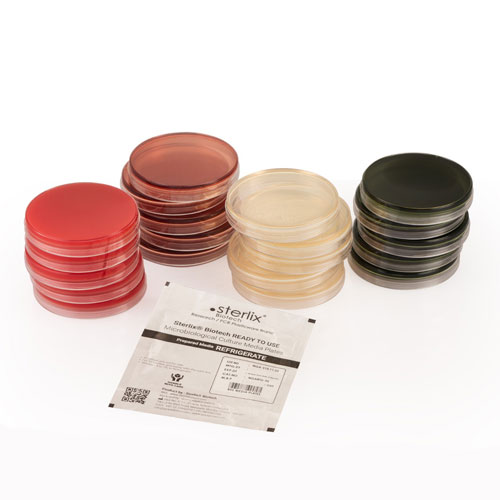Product Details
Urea Agar Base slant is a culture medium used for the detection and differentiation of microorganisms based on their ability to hydrolyze urea. It is commonly used in microbiology laboratories for the identification of bacteria, particularly to distinguish between urease-positive and urease-negative organisms.
The composition of Urea Agar Base slant typically includes:
Urea: Urea is the main component of the medium. It serves as a substrate for the enzyme urease.
Peptone: Peptone is a mixture of enzymatically digested proteins that provides essential nutrients for bacterial growth.
Sodium Chloride: Sodium chloride is added to maintain the osmotic balance of the medium.
Agar: Agar is included as a solidifying agent, providing a solid surface for bacterial growth and colony formation.
To perform the test, a bacterial culture is streaked onto the slant surface of Urea Agar Base. Urease-positive bacteria possess the enzyme urease, which hydrolyzes urea into ammonia and carbon dioxide. The ammonia produced raises the pH of the medium, resulting in a color change. Phenol red is commonly added as a pH indicator, turning from yellow to pink or magenta in the presence of alkaline conditions.
Urease-positive bacteria will exhibit a pink or magenta color change on the slant, indicating the hydrolysis of urea and alkaline pH. Urease-negative bacteria will not show any color change and will remain yellow.
Urea Agar Base slant is particularly useful for differentiating bacteria within the family Enterobacteriaceae, such as Proteus species (urease-positive) and Escherichia coli (urease-negative). It can also be used to identify other urease-positive organisms, including some species of Klebsiella, Citrobacter, and Morganella.
The composition of Urea Agar Base slant typically includes:
Urea: Urea is the main component of the medium. It serves as a substrate for the enzyme urease.
Peptone: Peptone is a mixture of enzymatically digested proteins that provides essential nutrients for bacterial growth.
Sodium Chloride: Sodium chloride is added to maintain the osmotic balance of the medium.
Agar: Agar is included as a solidifying agent, providing a solid surface for bacterial growth and colony formation.
To perform the test, a bacterial culture is streaked onto the slant surface of Urea Agar Base. Urease-positive bacteria possess the enzyme urease, which hydrolyzes urea into ammonia and carbon dioxide. The ammonia produced raises the pH of the medium, resulting in a color change. Phenol red is commonly added as a pH indicator, turning from yellow to pink or magenta in the presence of alkaline conditions.
Urease-positive bacteria will exhibit a pink or magenta color change on the slant, indicating the hydrolysis of urea and alkaline pH. Urease-negative bacteria will not show any color change and will remain yellow.
Urea Agar Base slant is particularly useful for differentiating bacteria within the family Enterobacteriaceae, such as Proteus species (urease-positive) and Escherichia coli (urease-negative). It can also be used to identify other urease-positive organisms, including some species of Klebsiella, Citrobacter, and Morganella.


